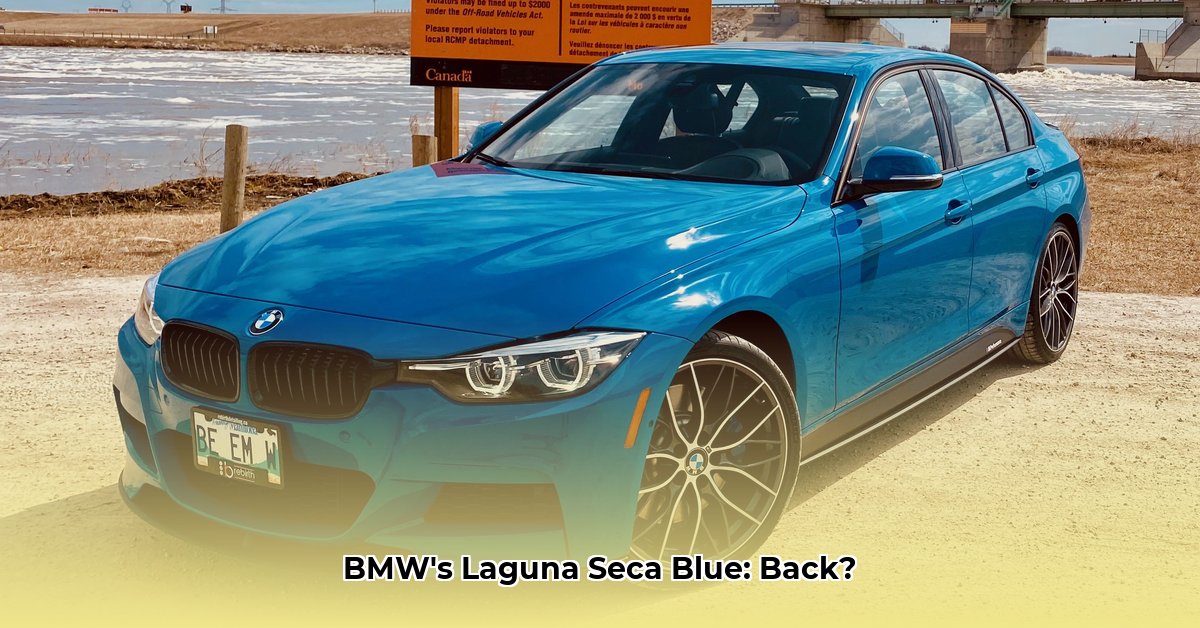
The E46 M3 Legacy: A Cult Classic's Enduring Appeal
The BMW E46 M3, produced in roughly 85,000 units, holds an iconic status among car enthusiasts. But beyond its lauded performance, one element stands out: Laguna Seca Blue. This wasn't just a paint color; it became synonymous with the car itself, a mesmerizing hue that captivated with its light-shifting brilliance. While precise sales figures for Laguna Seca Blue E46 M3s are unavailable, its enduring popularity is undeniable, evidenced by an online petition from 2008 begging BMW for its return. This inherent demand laid the groundwork for BMW's strategic reintroduction.
BMW's Calculated Gamble: Nostalgia as Marketing
Fast forward to the current G80 M3. BMW didn't just reintroduce Laguna Seca Blue; they orchestrated a calculated marketing campaign. The timing was impeccable, coinciding with the G80 M3's Life Cycle Impulse (LCI) refresh. This savvy move paired a classic color with a modern update, generating both excitement and a sense of urgency.
Further enhancing the allure, BMW slapped on a $4,500 premium for Laguna Seca Blue. While this might deter some, it simultaneously elevated the color's exclusivity and desirability. Scarcity, it seems, is a powerful marketing tool. This premium pricing strategically positioned Laguna Seca Blue as a highly coveted, limited-edition option.
A Blue-tiful Competition: Laguna Seca Blue vs. Yas Marina Blue
The automotive landscape offers a stunning array of blue hues. BMW's own Yas Marina Blue, popular on the F80 and F82 M3 and M4 models, stands as a formidable competitor. Both are visually striking, but Laguna Seca Blue possesses a unique advantage—its history. It's more than just a color; it's a piece of automotive heritage, a direct link to the legendary E46 M3. This legacy adds an unparalleled layer of desirability, setting it apart in a competitive market. This inherent difference is a key element in its success.
The Numbers Game: Assessing the Impact on Sales
Precise sales figures for Laguna Seca Blue G80 M3s remain elusive. However, several indicators strongly suggest a successful marketing strategy. The special-order status, coupled with the substantial price premium, points to significant demand. While we lack exact numbers, the simple fact that it was a special-order option likely indicates relatively high demand and a limited production run, further enhancing its exclusivity.
The Future is Blue: Lessons Learned and Future Outlook
The Laguna Seca Blue strategy serves as a valuable case study, highlighting the potent influence of nostalgia in marketing. BMW successfully tapped into pre-existing emotional connections with the brand, driving demand and potentially increasing sales. The calculated risk paid off, showcasing a deep understanding of their target audience and their appreciation for heritage.
This successful strategy raises important considerations for future BMW models and other manufacturers. Can this model be repeated across multiple manufacturers and models? What are the obstacles and what are other ways to make a successful marketing campaign like this?
While future success hinges on several factors, including managing production to meet demand, the initial response has been overwhelmingly positive, suggesting that this calculated gamble may have paid off handsomely for BMW.
Potential Risks & Mitigation Strategies
The success of the Laguna Seca Blue reintroduction wasn't without potential challenges:
| Risk Factor | Likelihood | Impact | Mitigation Strategy |
|---|---|---|---|
| Lower-than-anticipated demand | Low | Medium | Closely monitor market feedback and adjust production accordingly. |
| Production/Supply Chain Issues | Medium | High | Secure resources proactively and develop contingency plans. |
| Negative Customer Feedback | Low | Low | Address concerns through clear and open communication. |
| Brand Image Damage (poor execution) | Low | High | Maintain consistent and clear messaging. |
In conclusion, although precise financial data remains unavailable, the initial response to the return of Laguna Seca Blue paints a compelling picture of success. BMW's strategic use of nostalgia appears to have resonated powerfully with its target audience, offering a valuable lesson in leveraging emotional connections for marketing success. The enduring power of nostalgia, combined with a carefully managed strategy of exclusivity, has likely resulted in a significant return on investment for BMW, providing a blueprint for future marketing campaigns.